Offshore islets of Mauritius: National Parks and Nature Reserves
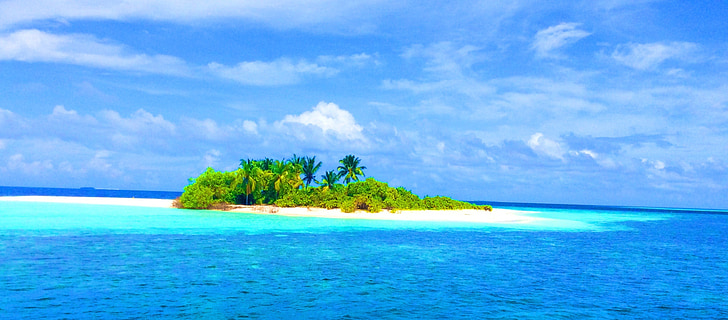
The offshore islets off the mainland of Mauritius are today the major places where the original flora and fauna subsist. As it is, the biodiversity of Mauritius evolved over millions of years to produce its specific endemism and diversity. Yet, since humans settled on the island 400 years ago, most of the local plants and animals have gradually disappeared. This includes the Dodo bird.
Consequently, regions where the local animals and plants are still alive, are now national parks and nature reserves. To date, 8 offshore islets are National Parks and 7 are Nature Reserves.
Why conserve the offshore islets of Mauritius?
Damaging impacts of humans on the islets
Before people settled on Mauritius, the mainland and the surrounding islets were vibrant with life. As people began to develop the land for agriculture and settlement, they also cleared the forest land. In this way, many animals and plants disappeared especially the small reptiles.
Yet, the most damaging impacts came through introduced animals like deer, pigs, rats and rabbits. They destroyed the understory forests, preyed on animals’ eggs and young ones and damaged their habitats. Among these creatures, perhaps the black rats (Rattus rattus), caused the most ecological damage on the islets.
Loss of biodiversity on the islets
Moreover, back in the past, people used the offshore islets as quarantine grounds or enemy watch-out points. Thus, to build settlements and infrastructure, ecological damage was inevitable.
Likewise, as people moved from islet to islet, they also introduced pests and weeds. As the foreign species proliferated, they competed with the local ones for food, space and even preyed on them. As a consequence, several plants and animals disappeared such as the Burrowing Boa on Flat Island.
Importance of the offshore islets of Mauritius
Nevertheless, while there is less than 2% of native forest on the mainland, some pristine forestland still occur on the islets. In fact, each one of the several islets around Mauritius has its own unique characteristics and is home to different species.
For instance, the Telfair’s Skink lives on Round Island only today when in the past the species lived on several others.
Offshore islets conservation status
It follows that to conserve these species, many of the islets are protected as national parks and nature reserves.
Definition of national park and nature reserve
Basically, a national park is a geographical area that the state protects for the long term preservation of its natural resources.
A nature reserve is a zone that the state or individuals/institutions protect for its flora, fauna and natural resources.
Offshore national parks
In Mauritius, the offshore islet national parks and their average sizes are Ile d’Ambre (128 ha), Ilot Fouquets (2.49 ha), Ilot Vacoas (1.36 ha), Ilot Flamants (0.8 ha), Ile aux Oiseaux (0.7 ha), Ilot Fous (0.3 ha), Pigeon Rock (0.63 ha) and Rocher aux Oiseaux (0.1 ha).
Offshore nature reserves
Furthermore, the offshore nature reserves including their average sizes are Flat Island (253.26 ha), Round Island (168.84 ha), Gunners Quoin (76 ha), Gabriel Island (42.21 ha), Serpent Island (31.66 ha), Ile aux Aigrettes (26 ha) and Ilot Mariannes (4.05 ha).
Offshore islet national parks of Mauritius
1. Ile d’Ambre
Ile d’Ambre offshore islet National Park is situated on the north-east of Mauritius and is easily accessible from the mainland. In general, it is home to a rich forest of mangroves where residents and tourists enjoy kayaking. Though people heavily degraded it in the past, today, some endemic Latanier Bleu (Latania loddigesi) trees still remain.
2. Ilot Fouquets
Located in the Mahebourg bay on the south-east coast, Ilot Fouquets is a small offshore islet with historical importance. The high ground slants sharply to the shore with a sandy channel separating them.
As it has a strategic position in the bay, it played an important role in spotting enemies during the naval battle at Grand Port. A lighthouse still stands tall there while native vegetation grows on the low grounds.
All in all, Ilot Fouquets is an important site for nesting birds.
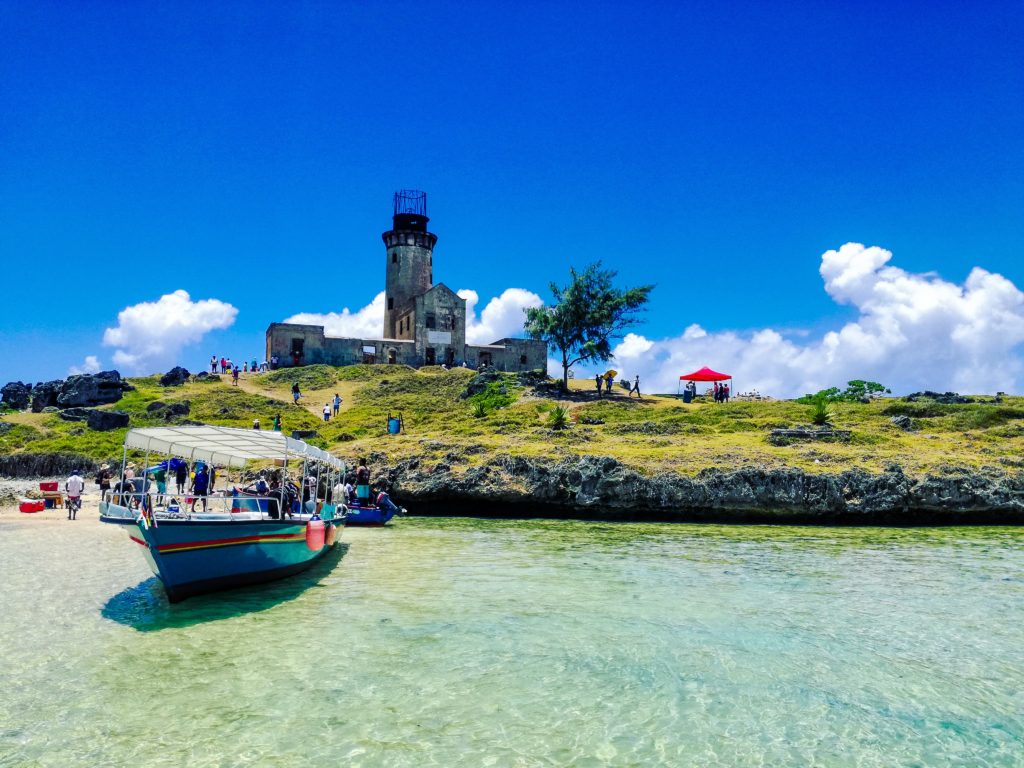
Photo by Ritesh Innovador on Unsplash
3. Ilot Vacoas
Also found in the Mahebourg bay, Ilot Vacoas too played an important role in the naval battles of Mauritius. Basically, it is an important site for nesting shearwaters. Some native plants still grow on the islet alongside a few reptiles like the Bojer’s skink, Bouton’s skink and the Nactus gecko.
4. Ilot Flamants
The small Ilot Flamants is basically a sandbank found off the south-eastern coast. Formed by coral pieces and sand, virtually no plants and animals inhabit the islet. This is because it is subject to frequent overtopping of waves and tides.
In the past, people mined large quantities of sand on Ilot Flamants which caused the islet to shrink in size. Today, the protective status of the islet inhibits all sorts of illegal activities like this. The goal is to allow the sandbank to increase in size and better perform its ecological functions.
5. Ilot Oiseaux
The small Ilot Oiseaux is a sandbank within a semi-enclosed coral reef located in the Mahebourg bay as well. The lagoon between it and Ilot Flamants is considered valuable for conservation.
6. Ilot Fous
This tiny islet in the Mahebourg bay is quite unhospitable. People can visit it only at low tide and when the weather conditions are good.
As it is, Ilot Mariannes, Ilot Fous and Rocher des Oiseaux were once a single island. But, the rising sea level eventually submerged them.
Lesser Noddies roost on Ilot Fous and the shoreline purslane (Sesuvium ayresii) is the only plant species that grow on it.
7. Pigeon Rock
As the name suggests, Pigeon Rock is simply a huge rock that immerses from the sea. This interesting feature is actually a volcanic plug. It is the result of magma solidifying inside the vent of an active volcano.
Pigeon Rock is an important refuge for seabirds such as the Wedge-tailed shearwater, red-tailed tropicbird and the white-tailed tropicbird.
8. Rocher aux Oiseaux
Rocher aux Oiseaux is also a massive rock that juts out of the sea. It is very dangerous to land on the islet because of its particular pitted limestone nature. Moreover, violent waves constantly break on the pitted rocks making ventures on the grounds quite dangerous.
Offshore islet nature reserves of Mauritius
1. Flat Island
Flat Island is the largest of the northern islets and has unique conservation importance. The surrounding sea is also quite rich making snorkelling an unforgettable experience.
In the main, the island is a common breeding site for seabirds and there are also expanses of the original coastal forest. Because of this, native reptile species like the Ornate day gecko and the Bojer’s Skink live there.
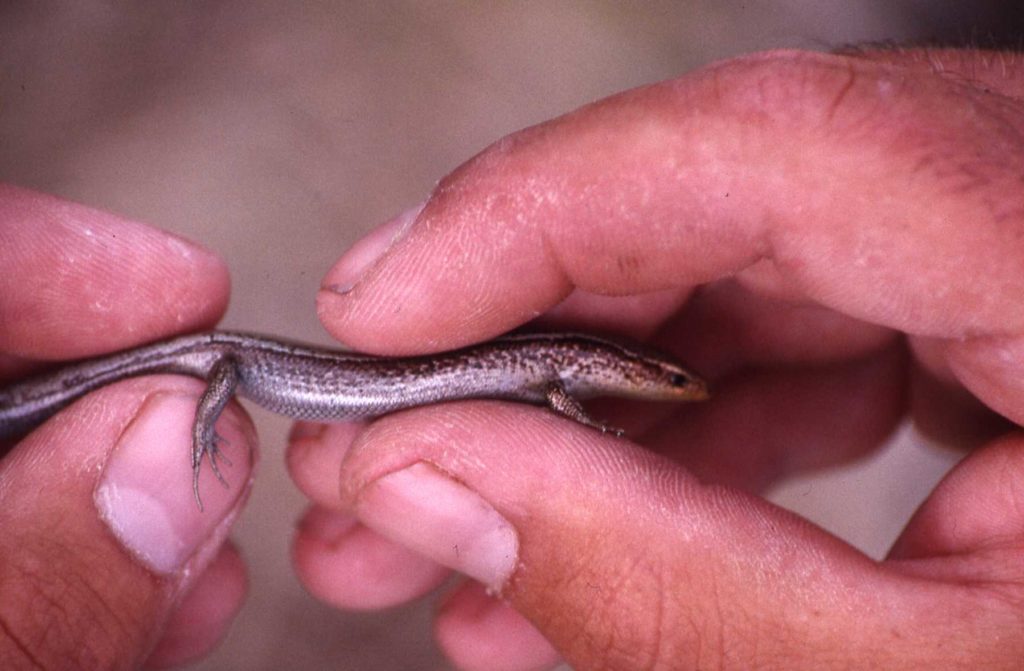
Photo by Simon Tonge on iNaturalist
2. Round Island
Quite contrary to its name, Round Island is not round! Nonetheless, it has a very high level of endemism.
Basically, this small islet off the north coast of Mauritius stayed free from rodents resulting in little impact on its ecosystem. Still though, at some point in time, people introduced goats and rabbits that thus damaged some of the native biodiversity.
But very soon, conservationists quickly eradicated them and put in place stringent conservation measures. Thus, the coastal palm-rich forest reflourished saving many animal species.
To date, at least 10 threatened native plant species exist on Round Island including the Vacoas (Pandanus vandemeerschii) and the Palmiste bouteille (Hyophorbe lagenicaulis). Also, two species of skinks, two species of geckos and two boa snakes inhabit the islet.
It is also the only known location in the Indian Ocean where the Round Island Petrel breeds.
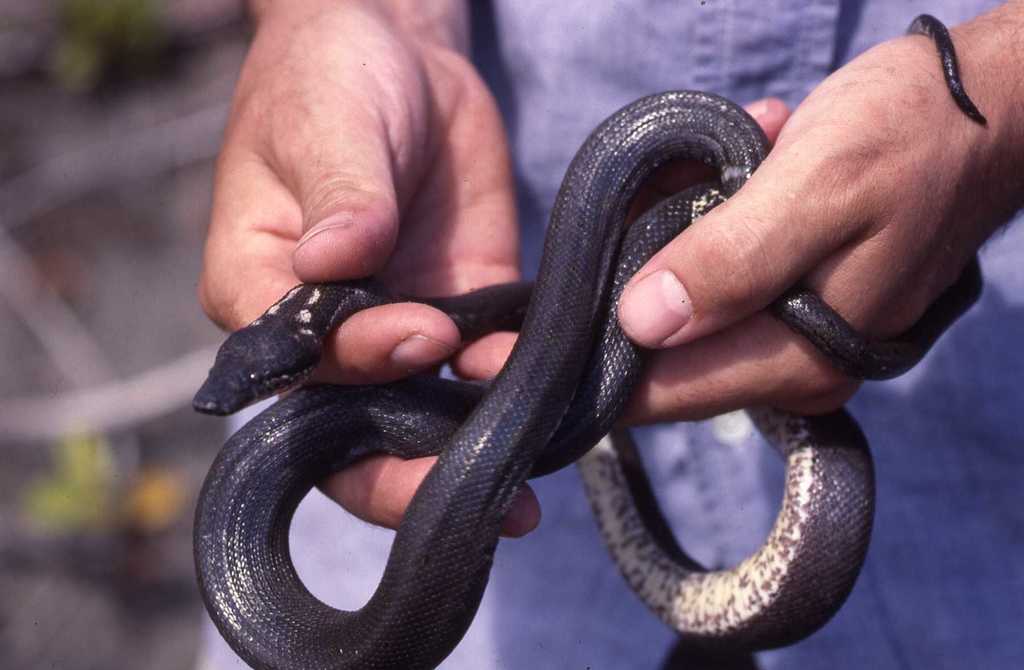
Photo by Simon Tonge on iNaturalist
3. Gunners Quoin
Located in the north of Mauritius, Gunners Quoin is a small islet that has an interesting whale shape. Many native plant species grow there such as the Mazambron marron (Lomatophyllum tomentorii) and the Acacia indigene (Gagnebina pterocarpa). Some small palm savannah pockets also exist.
Additionally, it is a common breeding site for the white-tailed tropicbird, the red-tailed tropicbird and wedge-tailed shearwaters. Amongst the reptiles, the lesser night gecko (Nactus coindemirensis) also lives on Gunners Quoin.
4. Gabriel Island
Gabriel Island is a small islet in the north of Mauritius and is a common cruise destination for its beautiful marine life and calm beaches. It is mostly covered by coastal dune vegetation and is the only place where the Baume de l’ile Plate (Psiadia argute) grows.
Gabriel Island has the highest percentage of native plant species compared to the other northern islets as well as a good population of white-tailed tropicbirds. There are also native reptiles like the Bojer’s Skink, the Snake-eyed skink and the ornate day gecko.
5. Serpent Island
Though it bears the name of Serpent Island, no serpent actually lives on this small islet off the north coast of Mauritius. Basically, this rocky islet has almost no vegetation. It is mostly home to seabirds including the brown noddy (Anous stolidus), the sooty terns (Sterna fuscata) and the lesser noddy (Anous tenuirostris).
The Nactus gecko and an unidentified tarantula species also live on Serpent Island.
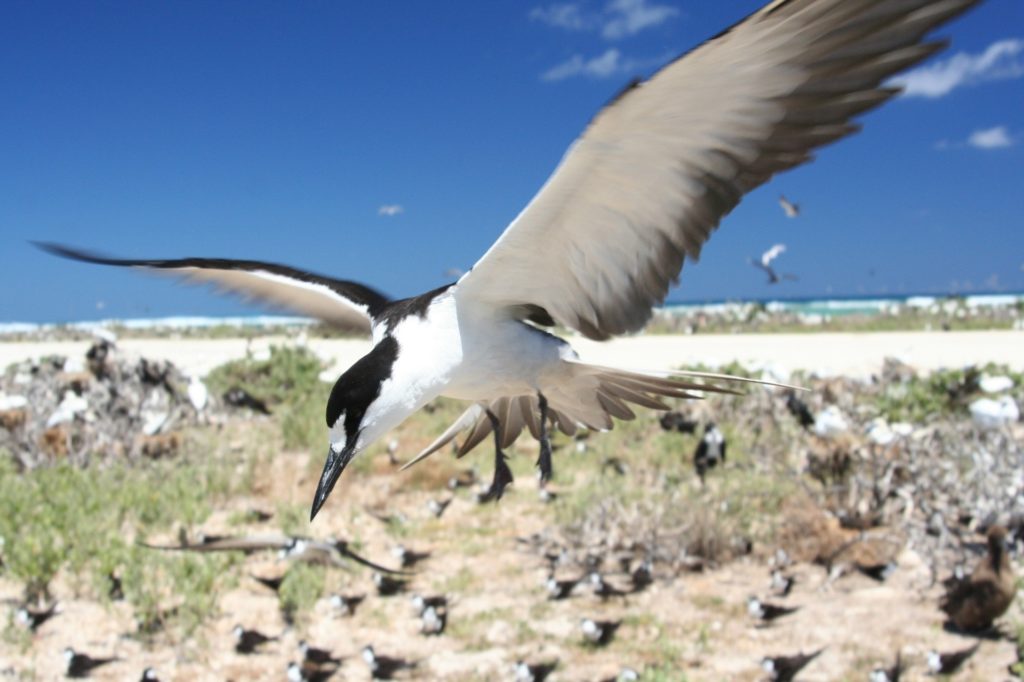
Image by 272447 from Pixabay
6. Ile aux Aigrettes
Ile aux Aigrettes is one of the most famous islets of Mauritius and island reserves in the Mascarenes. Situated in the south-east, this small islet still contains some of the original native forests. As such, rare trees like the Bois d’Ebene (Diospyros egrettarum), Bois Chandelle (Dracaena concinna) and the Bois de Boeuf (Gastonia mauritiana) grow there.
The Mauritian Wildlife Foundation (MWF) manages Ile aux Aigrettes and massive restoration works take place to de-weed and eradicate rats. The giant tortoises on the islet also help in weed control while 20% of the native Pink Pigeon population inhabits the forest. Recently, the MWF also released a population of the critically endangered Mauritian Fody on the islet.
Ile aux Aigrettes also serves as an educational and ecotourism site attracting school students and tourists alike.
7. Ilot Mariannes
This small islet reserve is found in the south-east of Mauritius off the coast of Mahebourg. Together with Ilot Fous and Ilot Oiseaux, Ilot Mariannes is referred to as the Ile Mariannes System. Though the ecosystem is not unique, the biodiversity is particular to this specific coralline islet environment.
Shearwaters nest on the islet and several seabirds also visit it though there are no permanent bird residents. The native green-backed Heron and the Whimbrel also frequently fly around it. To date, 29 vascular plant species have been identified on Ilot Mariannes. This includes the Veloutier blanc (Argusia argentea), a dwarfed Veloutier vert (Scaevola taccada) and the Bois matelot.
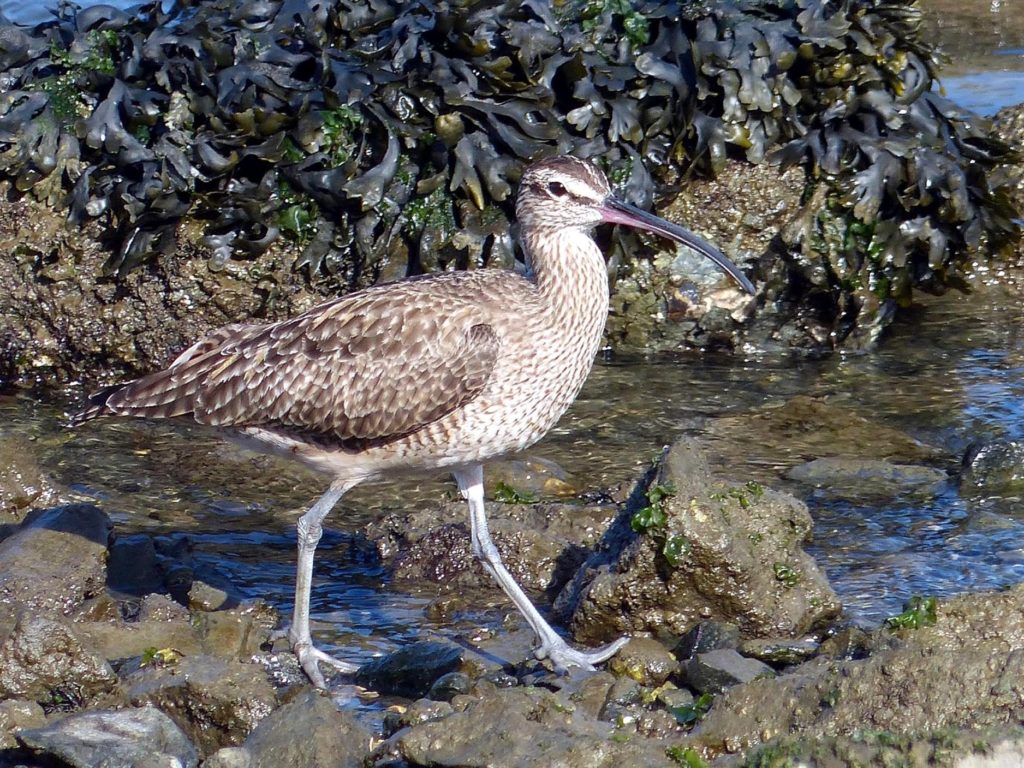
Image by Karney Lee, USFWS on Pixnio
